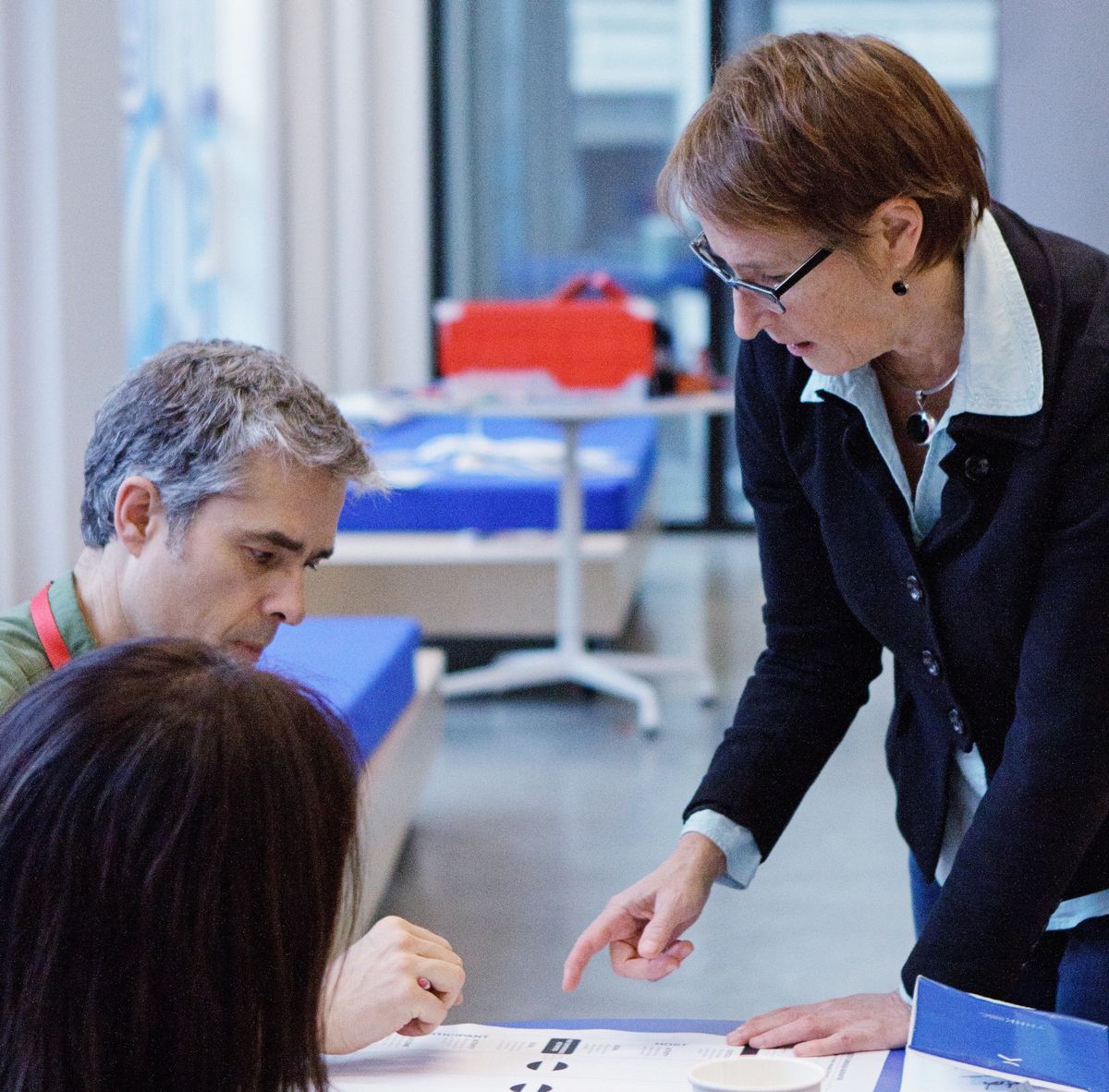For their graduating class, the THNK School of Creative Leadership asked me to design and lead a session that would help participants synthesize all their learning, deepen their narrative skills and set them up for the next stage of their leadership journey.
So, on the last day of the program, after lunch, I met with 18 exhausted and brilliant leaders – from banking execs to authors to entrepreneurs – to introduce them to the practice of Narrative Experience Design (NXD).
In theory, the idea is simple. You take your big picture leadership narrative or brand story – about what you’re trying to achieve – and break it up into discrete experiences that form stepping stones (chapters) that lead to happily ever after. For example, if you’re trying to shift your business model from a profit-driven venture that sells groceries – to a purpose-driven enterprise that promotes healthy eating, one specific experience that could be part of your narrative might be the introduction of a cooking class at your stores.
As leaders, we all “own” hundreds of everyday experiences that directly support our work. These “events” give us channels through which we can activate our leadership stories. Yet, as the THNK class acknowledged, we rarely design these experiences intentionally to support our overall narrative. That means we are missing critical opportunities to inform and influence our stakeholders.
Why do experiences matter? Because you have to have an experience in order to change. And everything we do is about driving change – in what we do, what we buy, how we act, how we lead. If you don’t design experiences with intention, you essentially leave your mission up to chance.
Why use narrative as a design framework? Because it enables you to design the future story you want people to remember and share about their experience.

In theory, my THNK class agreed that this all sounded pretty simple, straightforward. So, we decided to try it out, using a Narrative Experience Design canvas I developed. In pairs, they worked to sketch out the narrative of a simple experience from their stories – such as a pitch meeting to a funder.
After just a few minutes, the a-ha hammer hit them. It isn’t enough for them to know their own motivations and narrative goals. To design experiences that engage others, they need to know the motivations of their participants. Why should others participate in your experience? What are their stories? What’s in it for them? How can you continue to create value for them throughout the experience to keep them engaged? What does happily ever after look like for them?
Good narrative experience design takes time. You have to know a lot about the people you’re designing for – and find ways to align their needs with your own. In theory, you could design a mini-story for every single touch point in the experience, making sure it contributes to your overall narrative quest. In practice, however, few of us have that kind of time (unless you work for Disney!)
As the group concluded at the end of the session, the practice of narrative experience design has tremendous power and potential as a way for them to bring their leadership stories to life. The trick will be for them to figure out who they’re designing for – and which touch-points matter most.
I’ll be curious to see how these amazing leaders put this new tool to work as their journeys unfold.





